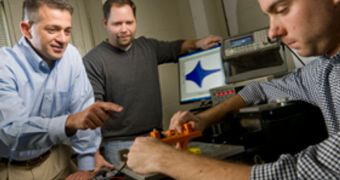Scientists at the Duke University are among the leading ones in the world when it comes to figuring out ways of tapping into everyday, common actions for extracting electricity. They are especially good at converting forms of energy such as motion in other forms that can power up computers and cell phones, as well as other appliances. The DU team has been able to construct a deceptively simple-looking device that is able to convert motion at several frequencies into electricity. This is something completely new, as most other methods only tapped into one frequency.
“The ideal device would be one that could convert a range of vibrations instead of just a narrow band. Nature doesn’t work in a single frequency, so we wanted to come up with a device that would work over a broad range of frequencies. By using magnets to ‘tune’ the bandwidth of the experimental device, we were able verify in the lab that this new non-linear approach can outperform conventional linear devices,” DU Pratt School of Engineering graduate student Samuel Stanton explains. He works in the lab of DU Assistant Professor of Mechanical Engineering and Materials Sciences Brian Mann, PhysOrg reports.
The science team, which also includes undergraduate student Clark McGehee, published its results recently, in the latest issue of the respected scientific journal Applied Physics Letters. Their new instrument consists of just a few basic elements, including a small cantilever, a few inches long and 1/4th of an inch wide, an end magnet, and a few other magnets, with which the end one interacts. The base of the cantilever is made up of a piezoelectric material. This class of materials has the ability to generate an electrical potential when mechanical forces are exerted on it.
In the journal entry, the experts report that, by changing the distance of the movable magnets, they can adjust the frequencies that are tapped in order to produce electricity. “These results suggest to us that this non-linear approach could harvest more of the frequencies from the same ambient vibrations. More importantly, being able to capture more of the bandwidth makes it more likely that these types of devices could someday rival batteries as a portable power source,” Mann says.
“These non-linear systems are self-sustaining, so they are ideal for any electrical device that needs batteries and is in a location that is difficult to access,” he concludes.

 14 DAY TRIAL //
14 DAY TRIAL //